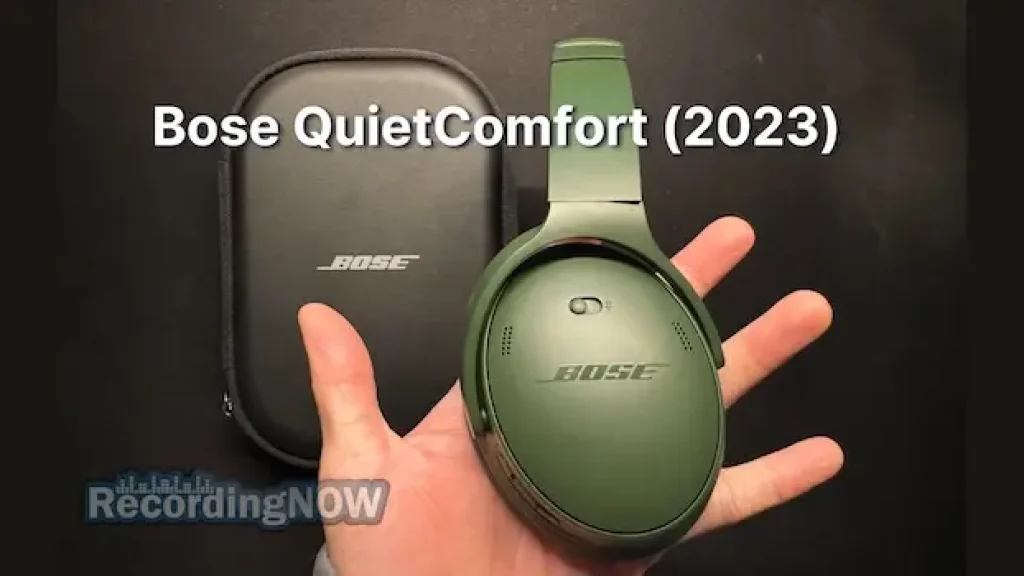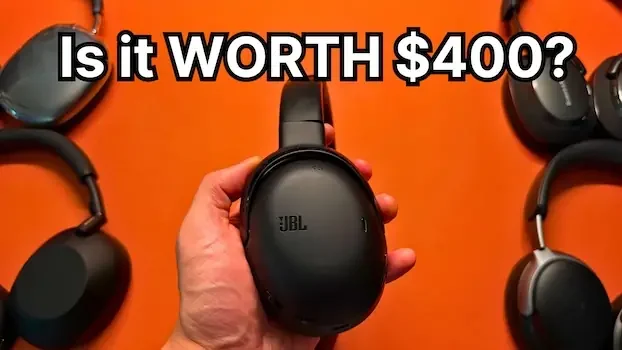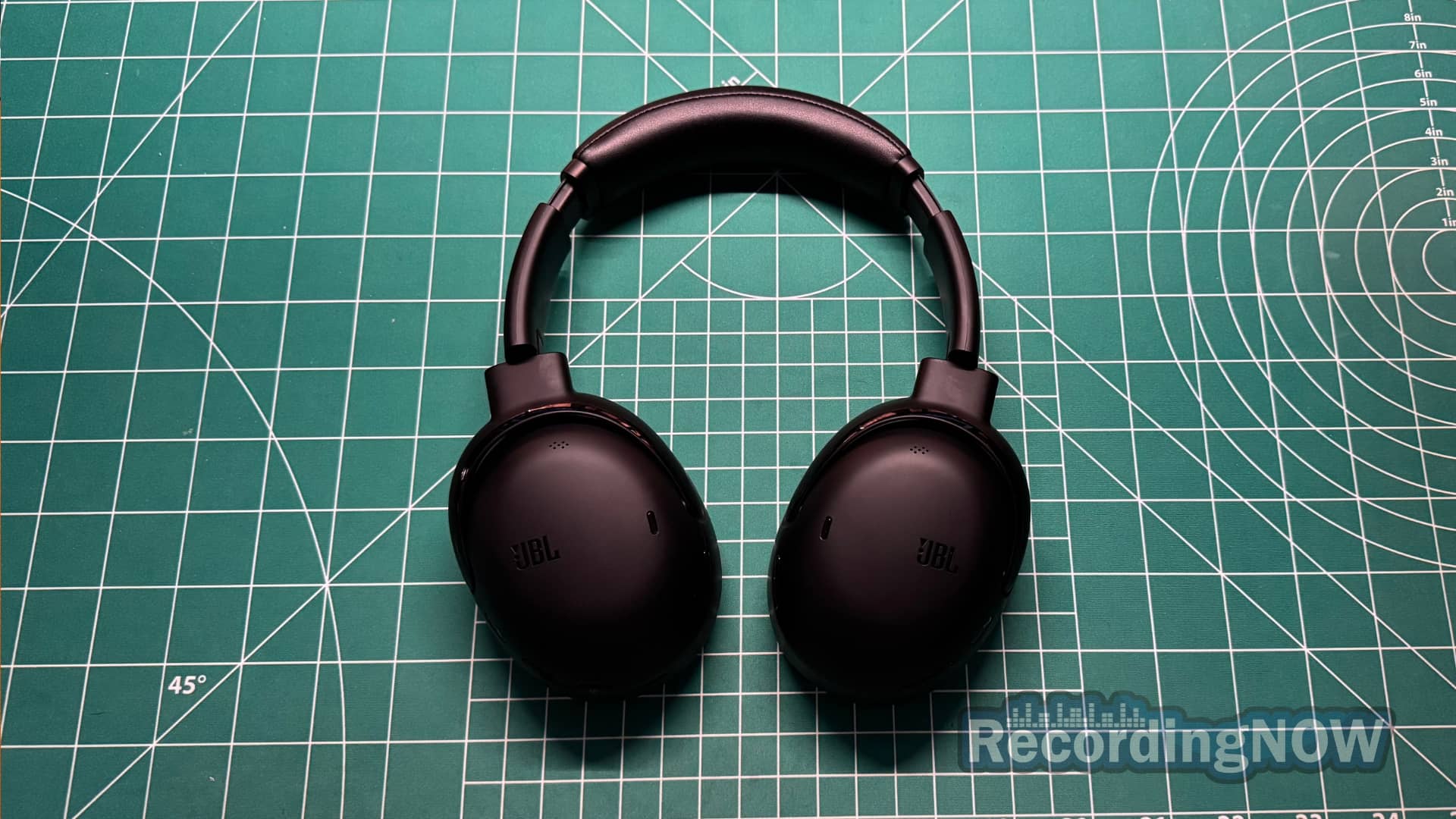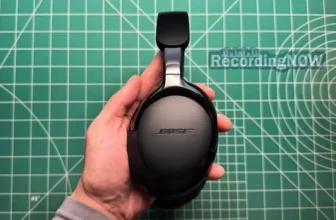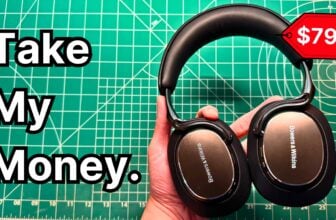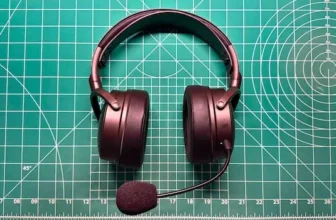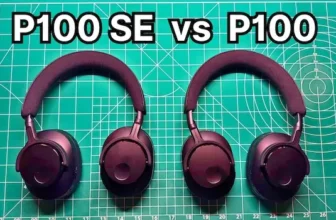In this article, I’m going to share my HONEST JBL Tour One M3 review for those who are wondering whether they are WORTH IT in 2025. I’ll also be comparing the JBL Tour One M3 vs Sony WH-1000XM6, Bowers and Wilkins Px7 S3, Apple AirPods Max, Bose QuietComfort Ultra, Sennheiser Momentum 4, and more!
I’m going to do my best to share whether these headphones are worth it, and ideally who these headphones are for. I’ve owned these headphones for a while now and have quite a few thoughts.
I’ll be sharing my critical opinion with 10 years of experience as a professional music producer, audio engineer, and tech journalist.
Let’s dive right in!
JBL Tour One M3 review in short
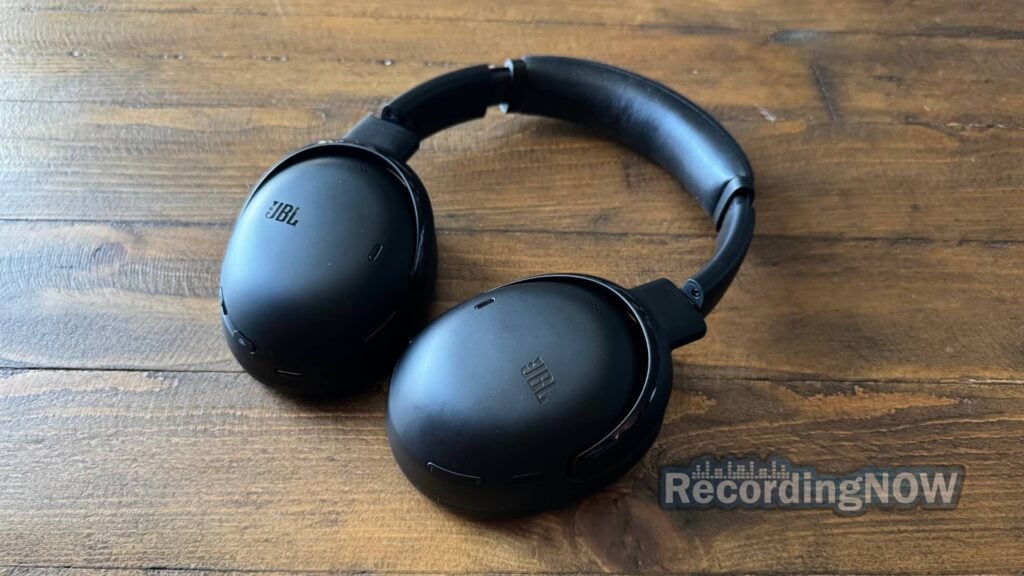
The JBL Tour One M3 is one of the better all-arounders for the wireless over-ear ANC headphone class, due to its excellent comfort and sound quality, but is slightly disappointing when it comes to noise cancelling performance. Competes very well against Sony WH-1000XM6, Bowers and Wilkins Px7 S3, Bose QuietComfort Ultra, Apple AirPods Max, Sennheiser Momentum 4, and Bowers & Wilkins Px8
Watch this Full Review on YouTube!
Have any QUESTIONS for me?
Leave it in the YouTube COMMENTS and I’ll do my best to get back to you 🙂
JBL Tour One M3 Overall Scoring
- Excellent sound quality
- Excellent comfort
- 70 hours battery life (ANC off)
- Average noise cancelling performance
- Not the best value at $400
Order Here for the LOWEST PRICE AVAILABLE (Do NOT pay retail):
Disclosure: These affiliate links may provide a discount and in return, give us a commission in order to keep this website 100% independent to ensure honest unfiltered reviews 🙂
JBL Tour One M3 Sound Quality
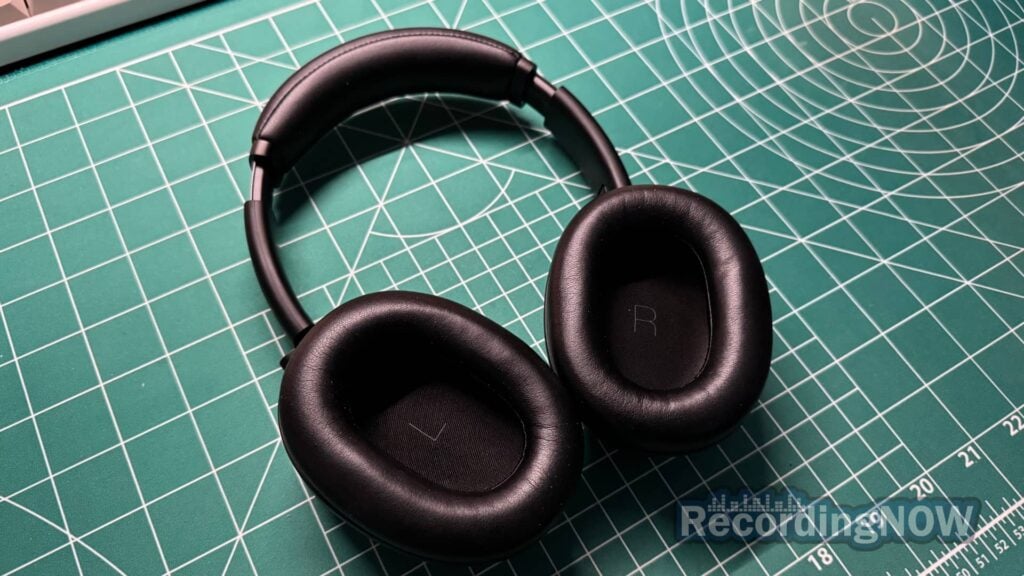
Stock sound first impressions…
Out of the box, the JBL jumps out to me as having quite a refined and high-quality sound, albeit a bit on the “boring” side for most consumers.
What I like is the bigger soundstage than average for this class, with good width and stereo separation.
I personally prefer a neutral bright sound profile, and these strike me as neutral-ish dark.
There is plenty of bass here, but a bit too much sub-bass stock. It’s pretty overemphasized and boomy.
Also, the treble is pushed just a bit too forward in the sibilance region, although not quite sibilant, so really on the line.
Overall, these are considered more balanced compared to most of the very hyped consumer headphones, but I think EQ is what opens these up nicely.
JBL has a very flexible 12-band EQ inside of its app, and these headphones take EQ very well, a sign of superior hardware underneath the hood.
So, I’ll be sharing my best EQ settings below, and conduct the rest of this review using these settings…
Best Equalizer (EQ) Settings for JBL Tour One M3
V1 – Mainly for Pop, Hip Hop
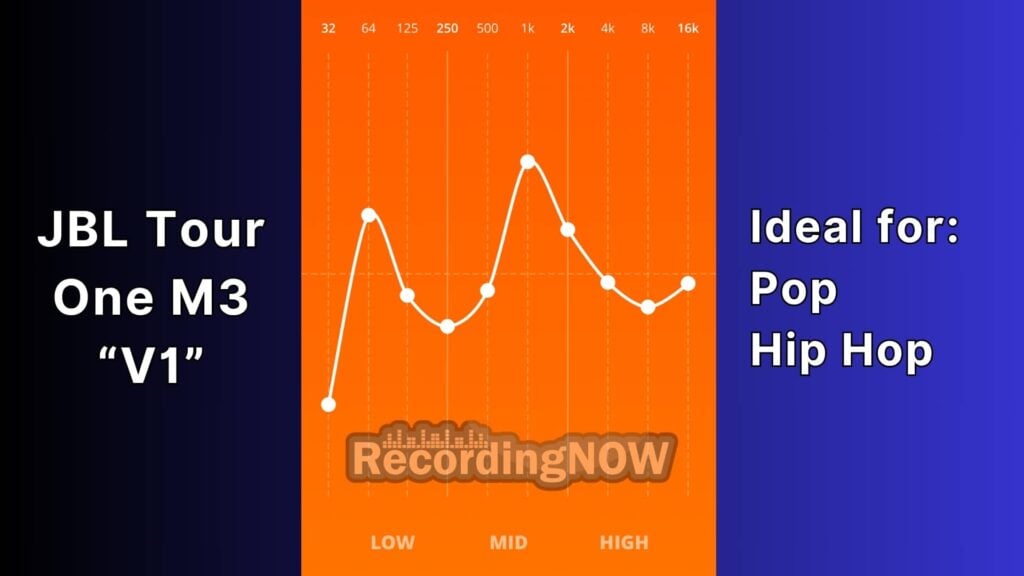
Result: More consumer-friendly and exciting. Bass is tightened up nicely while still being very present and impactful. More vocal-forward with better detail. Smoother treble in the sibilance regions.
Sound Quality after EQ…
The JBL Tour One M3 improves quite nicely after EQ.
Its inherent weaknesses of a rather unfocused and boomy sub-bass are tightened up very nicely, resulting in a clean and impactful bass presence.
The treble has been smoothened out and is still detailed yet a bit more natural.
The overall sound profile is more consumer-friendly, engaging, and exciting to listen to versus stock.
Let’s do some sound comparisons versus its competitors and wrap up final thoughts below…
vs Sony WH-1000XM6
The JBL Tour One M3 seems to do just about everything slightly better than the XM6.
More spacious and wider soundstage and spacing.
Slightly more detail without the sibilance or harshness in the treble.
Both have plenty of bass and sub-bass, that is an area where they’re pretty tied.
But overall, I find the JBL to be smoother with more resolution, clarity, and spacing over the XM6.
Also, the JBL takes EQ changes much better than the XM6, a sign that the hardware is superior in the JBL.
One more interesting note: I am quite the fan of the spatial audio “Cinema Mode” on the XM6 for movies and TV, but what surprised me is that the JBL can sound nearly as spacious WITHOUT turning on its spatial audio effect. Clear sign to me that the JBL has better soundstage and spacing.
(JBL does have its own spatial audio, but I tried it and wasn’t a fan.)
vs Bowers and Wilkins Px7 S3
Listening back and forth, I think the Px7 S3 has slightly higher sound quality as a whole, but they both sound excellent and are competitive with each other.
The JBL actually seems to have wider soundstage, but the Px7 S3 has higher resolution and more detail.
The JBL has plenty of bass, but to my surprise, the Px7 S3 was even more impactful and fuller in the bass region.
Some of that may be due to my EQ settings for the JBL, but I turned it down for both.
If there’s one advantage to the JBL, I’d say that the 12-band EQ is MUCH more effective and impactful than the 5-band EQ that is pretty limited on the Bowers & Wilkins.
vs Apple AirPods Max
Before EQ’ing the JBL, the AirPods Max is actually the more exciting and consumer-friendly sound, whilst the JBL is the more accurate and balanced sound profile, albeit a bit “boring”.
Luckily, JBL’s 12-band EQ is very effective and allows us to add some excitement, while retaining a higher level of fidelity overall.
The two headphones are actually closer in soundstage and separation, maybe a slight edge to the JBL.
I think the X factor is the JBL’s 12-band EQ offers much more versatility over the APM.
vs Bose QuietComfort Ultra (with V2 EQ)
Now this was a very interesting back and forth, as the two sound somewhat similar after EQ’ing both to taste.
Yes, the JBL has the higher level of resolution and fidelity, but I found the QC Ultra to be very competitive and equally enjoyable.
The JBL has the better dynamics.
Both are on the wider end of soundstage and spacing, which is one factor that makes them very enjoyable to listen to.
vs Sennheiser Momentum 4 (with V2 EQ)
Like the Bose, I’m always pleasantly surprised by how well the EQ’d Momentum 4 holds up today, and it’s still competitive with the newer JBL.
I’d say these two are more similar than different after EQ.
The sound is a little fuller and more impactful on the JBL, I think it just has slightly better dynamics and can handle more volume without losing clarity.
Also, the JBL takes EQ a fair bit better than the Momentum 4, so I think the hardware is slightly superior underneath it all.
vs Focal Bathys
Here is where the line gets drawn, and the Bathys is still clearly the superior headphone.
As decent as the soundstage is on the JBL, it’s not as expansive as the Bathys which really feels closer to an open-back for this class.
Also, the bass on the Bathys is more impactful and punchier while being tighter than the rather loose sub-bass of the JBL.
The separation, layering, and spacing is just a step above the JBL, and is in audiophile territory for the Bathys.
Music is simply more engaging and fun to listen to on the Bathys, despite the JBL being a technically-strong headphone, it falls a little flat.
One advantage of the JBL is, again, its 12-band EQ that is simply very effective over the Focal’s more limited EQ.
vs Bang & Olufsen Beoplay H95
Like the Bathys, I think the H95 is able to match the JBL’s audiophile technicalities, while simultaneously being more fun and engaging to listen to.
Don’t get me wrong, the JBL is competitive when it comes to pure sound quality, but it gets a bit exposed for being a tad “boring” compared to the more colored sound profile of the H95.
The H95 is simply more exciting to listen to, especially out of the box.
I’d rather listen to the H95 over the JBL in most cases.
vs Cambridge Audio Melomania P100
One of the more relative newcomers to the site is the Cambridge Audio P100, which is an excellent-sounding headphone, especially for the money.
Listening back to back, it’s pretty close between these two, but I give the edge to the P100.
The P100 has even more soundstage and spaciousness, putting it more in line with the Focal Bathys and H95.
I’ll say the bass response is more impressive on the JBL, but the details and clarity go to the P100.
Also, the P100 matches the EQ of the JBL in terms of effectiveness and flexibility, so that tells me we’ve got some high-quality hardware for both of these headphones.
Overall thoughts on sound quality…
Overall, the JBL jumps to nearly the top for the sub-$600 wireless ANC headphone class for sound quality, but perhaps slightly below the Bowers & Wilkins Px7 S3 and Cambridge Audio P100, which is nothing to be ashamed of.
There’s also still a clear gap between the midrange and high-end with the likes of the Focal Bathys and Bang & Olufsen H95, but this gap is getting closer each year.
There’s not much to nitpick about the sound, as its 12-band EQ can really shape these to pretty much whatever you want them to be.
Also, I found watching movies and TV very enjoyable and immersive even WITHOUT turning on its spatial audio modes (which I wasn’t a fan of).
So all in all, JBL Tour One M3 is one of the better choices for sound quality available today.
Sound Quality Score: 9.1 out of 10 (after EQ)
JBL Tour One M3 Comfort
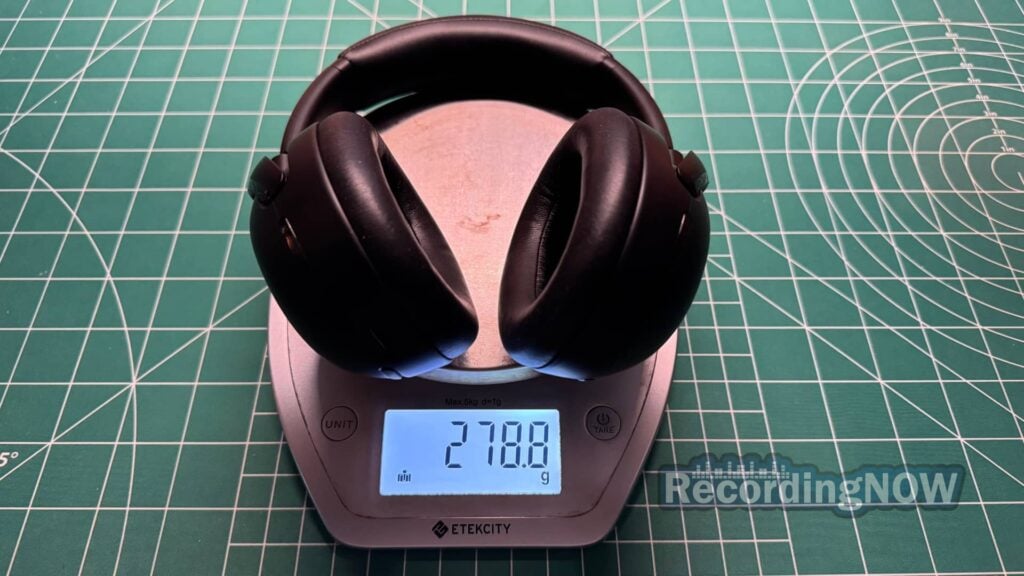
The JBL Tour One M3 is a bit lighter than average in this class, as weighed on my scale:
- Bose QuietComfort – 236.1 grams
- Sony WH-1000XM5 – 245.9 grams
- Sony WH-1000XM4 – 251.6 grams
- Sony WH-1000XM6 – 252.8 grams
- Bose QuietComfort Ultra – 254.4 grams
- Beats Studio Pro – 268.6 grams
- JBL Tour One M3 – 278.8 grams
- Sennheiser Momentum 4 – 292.9 grams
- Bowers and Wilkins Px7 S3 – 298.3 grams
- Bowers and Wilkins Px7 S2e – 305.2 grams
- Sonos Ace – 318.1 grams
- Bowers & Wilkins Px8 – 320.1 grams
- Bang & Olufsen H95 – 323 grams
- Cambridge Audio Melomania P100 – 329.9 grams
- Focal Bathys – 350 grams
- Apple AirPods Max – 387.8 grams
Upon first putting on the JBL Tour One M3, I immediately found them to be one of the most comfortable headphones I’ve tested.
The first thing I noticed was the lighter weight, and minimal clamping force.
While not quite as light as the Sony WH-1000XM6 or Bose QuietComfort Ultra, I estimated they were closer to those two than most of the headphones recently tested.
In addition to the lighter weight, there is plenty of interior earcup space, so my ears are completely free and not pressing against the inside.
Lastly, the headband and earpad cushions are plush enough, similar to the Bose QC Ultra.
I think these headphones are one of the few that deserve the rare perfect Comfort score.
Comfort Score: 5 out of 5
Features / Build Quality / Battery Life / Noise Cancelling

Features
The JBL Tour One M3 was released in April 2025 and has many modern wireless ANC headphone features:
- Wireless Transmitter for controlling music, ANC settings, and sharing audio to multiple devices
- Multiple built-in microphones for taking calls
- Bluetooth 5.3 with LE
- LDAC
- Multi-point connection (Can’t choose which devices via app)
- Active Noise Cancelling
- Transparency Mode
- Ability to turn either mode OFF
- Wear Detection with Automatic Play/Pause
- Companion Smartphone app to customize EQ, settings, and update firmware
- 12-band EQ
- Includes a compact-sized premium Hard Shell case
- USB-C to USB-C charging cable
- USB-C to stereo cable
JBL Tour One M3 Build Quality
I would say the JBL Tour One M3 has about average build quality for its price.
There’s a lot of plastic to the touch, covering the exterior of the earcups and a good portion of the headband.
Luckily, there seems to be a metal core making up the headband, and there’s also some decent quality leather on the headband and earpad cushions, making them feel not super cheap.
Overall, I’m not that impressed compared to its peers in the price range like Bowers & Wilkins Px7 S3, Sonos Ace, and AirPods Max.
But it seems slightly better than the Sony WH-1000XM6 at least.
JBL Tour One M3 Battery Life
The P100 is rated at 100 hours of battery life on a single charge, which is currently the class leader, and by a good margin.
- Cambridge Audio Melomania P100 – 100 hours
- Marshall Monitor III – 70 hours
- JBL Tour One M3 – 70 hours (ANC off), 40 hours (ANC on)
- Sennheiser Momentum 4 – 60 hours
- Sony WH-1000XM6 – 40 hours (ANC off), 30 hours (ANC on)
- Sony WH-1000XM5 and WH-1000XM4 – 30 hours
- Bowers & Wilkins Px7 S3 and Px8 – 30 hours
- Sonos Ace – 30 hours
- Bose QuietComfort Ultra – 24 hours
- AirPods Max – 20 hours
In my testing, I found this figure to be accurate.
This is very impressive, combined with the fact that the battery is meant to be user-replaceable, which is a nice touch from Cambridge Audio to make these a more consumer-friendly product versus others.
JBL Tour One M3 Noise Cancelling Performance
So the JBL Tour One M3 is one of the newer releases in this space, having been released in April 2025, and they have a lot of marketing material hyping up the noise cancelling performance with its “8-Mic True Adaptive Noise Cancelling 2.0 with real-time adjustments”.
Two other ANC headphones that just recently released are the Sony WH-1000XM6 and the Bowers & Wilkins Px7 S3.
Honestly, I don’t find the JBL Tour One M3’s noise cancelling to be anything special, and in fact, it seems to be the least impressive of these three.
Definitely less effective and consistent than the Sony WH-1000XM6 at the least, and perhaps on the same level or slightly worse than the Bowers & Wilkins Px7 S3.
Now don’t get me wrong, I think in perfect conditions with a perfect seal, the ANC can be effective, but it seems to struggle with inconsistency and having to adjust quite often.
There are definitely certain problem frequencies, like air conditioning or car exhausts for example, that seem to find its way through the noise cancelling filter easier.
Overall, I think the noise cancelling can be quite good at times, but less impressive in others, so I’d say it’s about average to slightly above average for the class.
I find that even the older headphones like Bose QuietComfort Ultra and Apple AirPods Max to be more effective for noise cancelling.
Features / Build Quality / Battery Life / Noise Cancelling Performance Score: 4.5 out of 5
Value
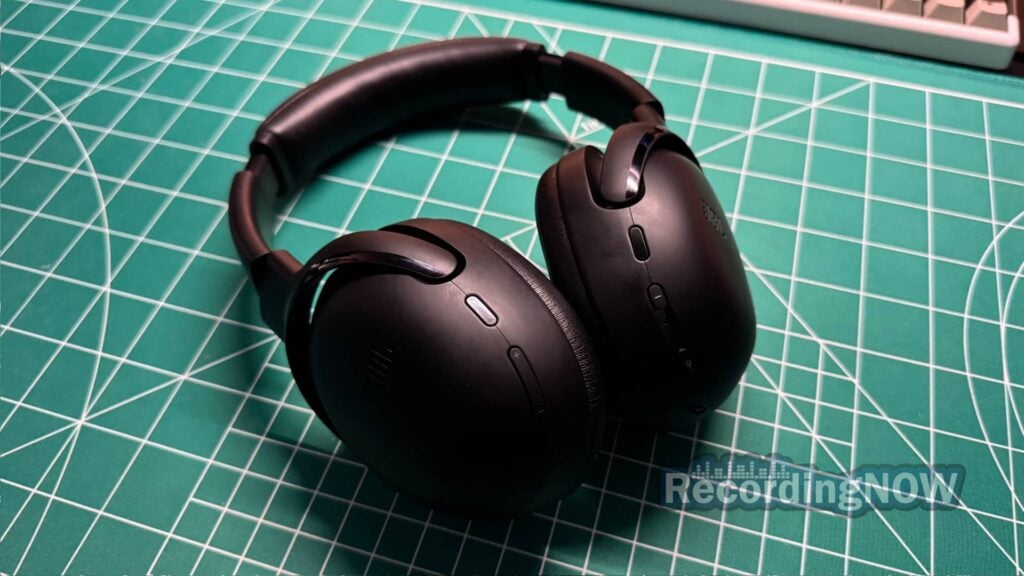
The JBL Tour One M3 retails at $399.95 for the version with the transmitter which we are reviewing today.
Because it’s still pretty new, there are no discounts or renewed copies.
Honestly, I think close to $400 for a pair of JBL headphones with average noise cancelling performance is a bit hard to swallow.
Yes, they have great comfort and very good sound quality, but I found the noise cancelling to be slightly disappointing considering they’re one of the newest models and have tons of marketing about its ANC capabilities.
Personally, I think these would do amazing at closer to a $300 price point, as their cheaper JBL Tune 770NC (which I reviewed as well) has some impressive value at just $130.
These do make a case for one of the better all-arounders in the class, but the competition is very stiff around this price point today.
Value Score: 3.5 out of 5
Overall Scoring Breakdown
Sound Quality: 9.1 / 10 (after EQ)
Comfort: 5 / 5
Features / Build Quality / Battery Life / Noise Cancelling: 4.5 / 5
Value: 3.5 / 5
Total: 22.1 / 25
Is the JBL Tour One M3 WORTH IT?
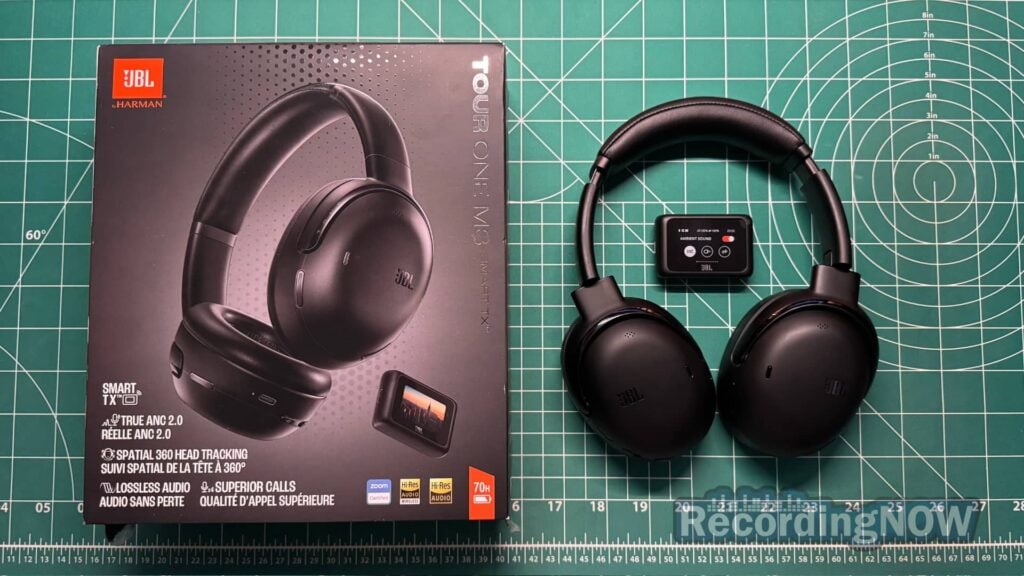
Overall, the JBL Tour One M3 is indeed one of the better all-arounders in the wireless over-ear ANC headphone class.
Its strengths are clearly its excellent comfort and sound quality, but I’ve got to admit that I’m a bit disappointed by its noise cancelling performance.
Personally, there’s something about paying $400 for JBL headphones that makes me a bit uneasy compared to “safe” choices like the Sony XM6, Bowers & Wilkins Px7 S3, or Bose QuietComfort Ultra.
I do think the Tour One M3 is a compelling package as a whole, but personally, I’d probably choose one of the above 3 due to all having better noise cancelling in my experience.
Some very Strong Alternatives in this class of noise cancelling headphones are:
- Sony WH-1000XM6
- Bowers & Wilkins Px7 S3
- Bose QuietComfort Ultra
- Apple AirPods Max
- Sennheiser Momentum 4
- Cambridge Audio Melomania P100
- Focal Bathys
- Bang & Olufsen Beoplay H95
- Bowers & Wilkins Px8
- Bowers & Wilkins Px7 S2e
- Sony WH-1000XM5
- Bose QuietComfort (2023 model)
- Beats Studio Pro
Some Relevant Comparisons in this class of noise cancelling headphones are:
- Sennheiser Momentum 4 vs Bose QuietComfort Ultra
- Bose QuietComfort Ultra vs Apple AirPods Max
- Bose QuietComfort Ultra vs Sony WH-1000XM5
- Sennheiser Momentum 4 vs Sony WH-1000XM5
- Sennheiser Momentum 4 vs AirPods Max
- Sonos Ace vs AirPods Max
I highly recommend you check those out next!
Lastly, if you’d like to save some money and keep supporting RecordingNOW.com’s 100% independent, unbiased reviews, do consider using some of our affiliate links below to shop and even just compare prices. We purchase all products we review with our own money to maintain the highest level of integrity, and your support goes into that plus a continuously improving site experience.
Order Here for the LOWEST PRICE AVAILABLE (Do NOT pay retail):
Disclosure: These affiliate links may provide a discount and in return, give us a commission in order to keep this website 100% independent to ensure honest unfiltered reviews 🙂
How We Tested and Our Methodology
RecordingNOW.com is a 100% independent publisher with over 10 years of experience testing and reviewing consumer electronics and headphones.
We currently purchase the products we test with our own money, and are not paid by any company or manufacturer to influence our opinions or decisions.
After purchasing the product, we conduct up to hundreds of hours of detailed hands-on testing in a controlled, acoustically-treated environment.
ODi Productions is our resident expert and author of this article, with 10 years of experience as a professional music producer, tech journalist, and audiophile.
Read Next

Bose QuietComfort Ultra Review


Sennheiser Momentum 4 Headphone Review
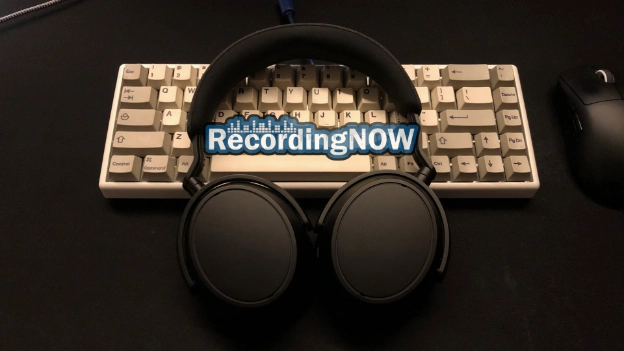

Bowers and Wilkins Px7 S2e Review

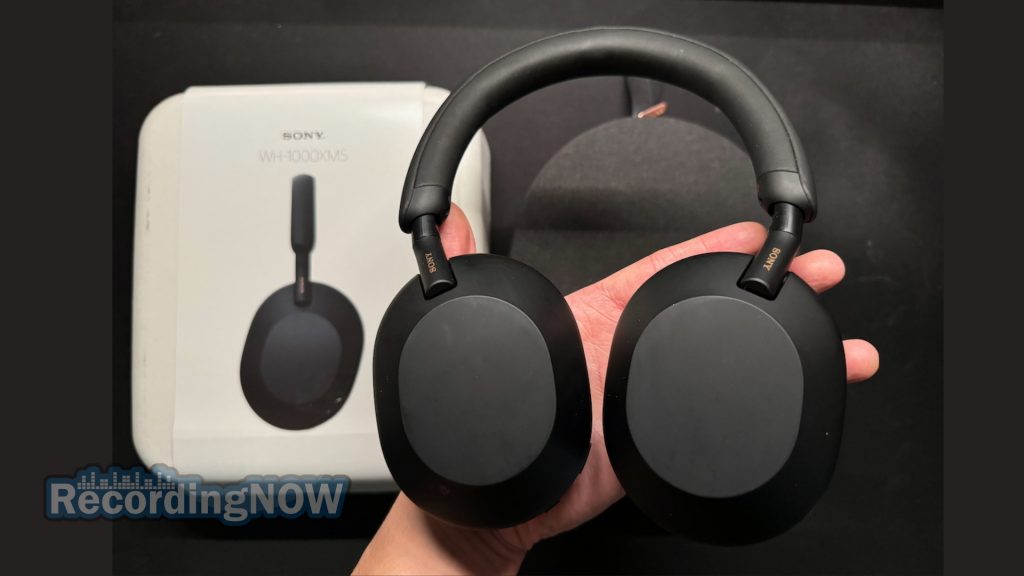

Bose QuietComfort Review (2023 Model)
